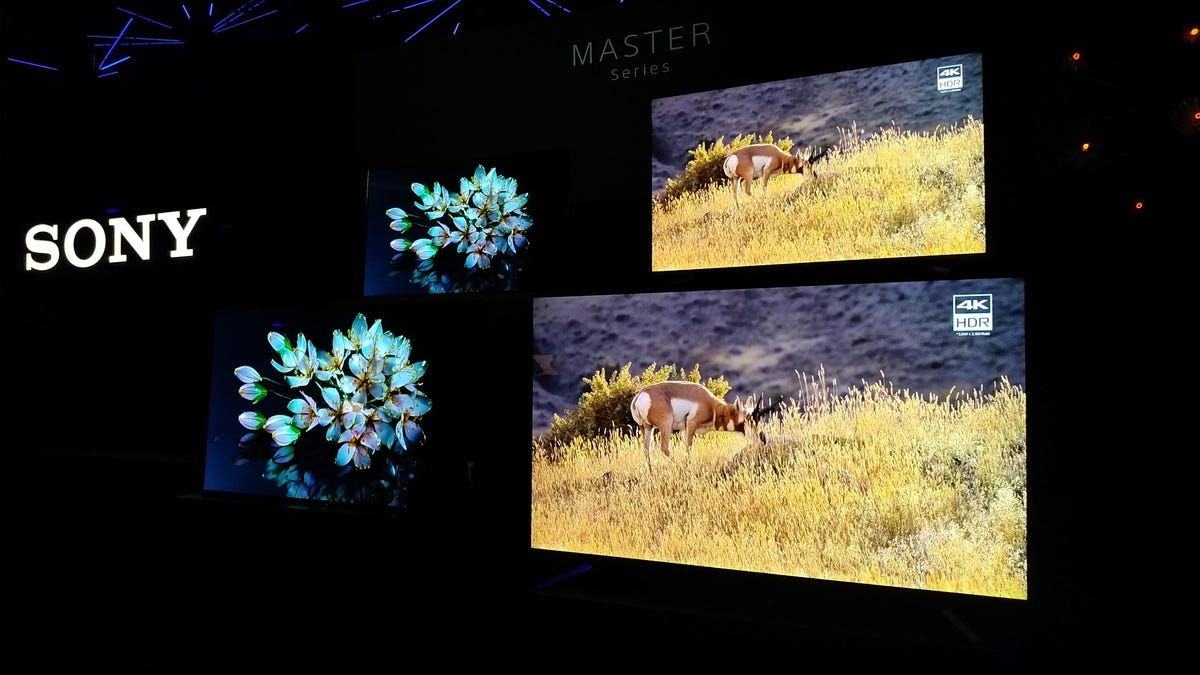 Why You Can Trust CNET
Why You Can Trust CNET Sony's flagship Master Series LCD and OLED TVs now start at $3,500
Sony's A9F and Z9F screens promise "reference-level" image quality, with proprietary tech such as a special Netflix mode.

Sony has announced final pricing for its flagship series of 4K TVs, the A9F (OLED) and Z9F (LCD) Master Series, and it's a grand cheaper than first thought. The Master series is designed be as close to "reference quality" as possible in a consumer flatscreen.
The pricing is as follows:
- Sony Master Series XBR-55A9F 55-inch OLED, $3,500 (originally $4,500)
- Sony Master Series XBR-65A9F 65-inch OLED, $4,500 (originally $5,500)
- Sony Master Series XBR-65Z9F 65-inch LCD, $3,500 (originally $4,500)
- Sony Master Series XBR-75Z9F 75-inch LCD, $6,000 (originally $7,000)
The TVs are currently on presale at Best Buy and Amazon and will be available from September 11.
As you might expect from Sony's best TVs, pricing is still higher than for many competing products. The LG C8 OLED TV is currently selling for $2,200 and $3,000 at 55 and 65 inches, respectively, while Samsung's Q9 LCDs cost $3,300 and $5,300 for the 65- and 75-inch sizes.
Both Sony series try to justify those prices with an aim to "faithfully reproduce the creators' intent" for both HDR movies and streaming content, including a dedicated Netflix Calibrated Mode.
Sony says it developed Netflix Calibrated Mode in conjunction with the streaming giant and the mode activates when the TV detects specific metadata from the Netflix content. Sony representatives told us that the mode could theoretically be applied to existing models.
The A9F OLED comes with technologies including Pixel Contrast Booster, which is designed to boost colors at high brightness levels. It also offers an improved version of the Acoustic Surface Audio+ technology that appeared in last year's A1E and that can now act as a center channel in a surround-sound system.
The Z9F LCD (in both 65-inch and 75-inch size) is a follow-up to 2016's Sony Z9D and it features a new X-Wide Angle mode designed to boost off-axis viewing by reducing color shifts. Sony says each panel is calibrated at the factory in order to maximize color uniformity. in addition, X-Motion Clarity "minimizes motion blur without sacrificing screen brightness."
The TVs incorporate Sony's next-generation Picture Processor X1 Ultimate, which it says can "intelligently detect and analyze each object in the picture through Sony's new Object-based Super Resolution for exceptional accuracy and detail." The TVs also include an automated calibration mode designed to be used with CalMan software.
The newly named Master televisions are designed to complement the company's existing Elevated Standard line of AV equipment. Both lines of TVs will incorporate microphones with Google Assistant for "hands-free" operation of the TV and for communicating with other Google devices.
Best TVs for 2018: Our experts pick the year's top TVs.
What is OLED? And what can it do for your TV?
First published July 31, 12 p.m. ET.
Updated, Sept. 6 at 3:13 p.m. ET: Updated pricing information.

